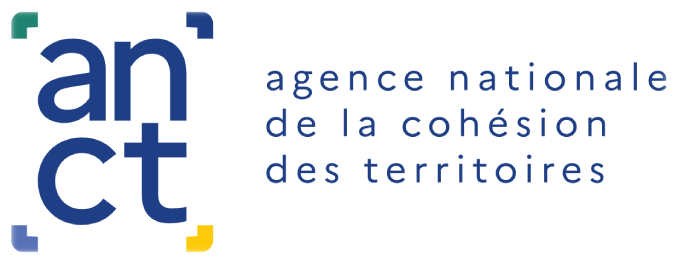While the government has set itself the goal of making all of its public services accessible online by 2022, it's time for the major national players to take stock, with the publication of online public service usage indicators for 2017. The 2017 Digital Barometer and the 2017 edition of the Digital Gouv Barometer provide additional insights into the use of online public services and the judgment made by users.
290 million visits in 2017 for Service-Public.fr
Service-public.fr, which celebrated its 17th anniversary in October 2017, has become the reference site for government users recorded 290 million visits in 2017 (40% of which were via mobile devices), exceeding the peak recorded in 2015.- nearly 3.7 million online procedures were completed in 2017 from service-public.fr
- 53 million CERFA forms were downloaded during the year.
- 772,600 service-public.fr personal accounts were opened during the year
- Read about it: 290 million visits to service-public.fr in 2017
Income tax: more than half of taxpayers declared their income online this year
In 2017, more than 20 million tax households had reported their income online, an increase of 2.4 million tax households compared to 2016. For one-third of the 20 million tax households that filed online, the filing was done in just four screens.Health insurance: 65% of the insured use the services of Ameli.fr
With 27.5 million accounts covered in 2017 (23.5 million in 2016), Ameli.fr, the Health Insurance service platform, is the leading public health website.Some of the most common procedures are now carried out mainly by electronic means: issuing a certificate of entitlement (61%) or applying for a European Health Insurance Card (75%).
At the beginning of 2018, the health insurance company counted more than 22 million contacts per month on Ameli.fr: 80% of procedures are now done online.
Since its launch 5 years ago, the ameli app has passed the 10 million downloads mark.
- Read about it: 65% of insured persons use the services of ameli.fr
40% of retirees manage their retirement online
7 million retired people have opened a personal space on theinsuranceretraite website. The most used online services are- Follow-up of the file
- Consultation of the last three payments
- Consultation of the career statement for all plans
- The amount declared
The inter-regime online retirement application procedure will be available in January 2019. With this service, developed by CNAV on behalf of its partners in the GIP Union Retraite, insured persons will have only one application to make online for all of their basic and supplementary pension schemes.
- Read about it: 40% of retirees manage their retirement online
Family allowances: 40 million monthly connections for Caf.fr
The CAF reportsan increase in the number of visits of 15% to 20% per year, with a significant increase in visits since the launch of the activity allowance.- 80,9 % of the beneficiaries have sent an email address to their Caf and have given their agreement to use it
- 54.9% of visits (page views) to caf.fr are from a computer, 37.4% from a smartphone and 7.6% from a tablet
- 13.4 million separate beneficiaries logged on to caf.fr (classic site) at least once in 2016
- 6.2 million different beneficiaries have connected to the mobile offer (mobile application or caf.fr optimized for mobile devices)
- the simulator allows recipients to understand the benefit thanks to a sequence of steps to find out if they are eligible and to know the amount to which they are entitled,
- the tele-procedure allows recipients to apply for benefits online without providing any supporting documents, and also to send the requested document directly in electronic format at the end of the process,
- Automatic settlement allows for faster notification to recipients and faster payment of benefits.
More than half of the beneficiaries who used caf.fr in 2016 reported a frequency of consultation of at least once a month (53%, including 27% several times a month).
67% of the population aged 12 and older completed an administrative action in the past 12 months in 2017 (up from 62% in 2016).This growth is explained, according to Credoc, by "the possibility of carrying out more and more administrative procedures on the Internet and increasingly frequent equipment (smartphones, computers and tablets) ".
It is also important to take into account the changeover of certain procedures to all-digital. After the online file for social housing in 2012, which is now compulsory for all applicants, registration at the Pôle emploi has been done online since March 2015, as has the application for the activity bonus launched by the Caisse nationale d'allocations familiales (CAF) in January 2016.
3 million users for France Connect
Launched in June 2016, France Connect, the government's online identification and authentication system FranceConnect allows users to access all their public services online without necessarily having to have accounts with them. With FranceConnect, users are invited to authenticate themselves using accounts they already have with Impôts.gouv.fr, Ameli.fr or the Post Office.18 months after its launch, France Connect provides access to 300 sites and registers three million users
- Read about it: 3 million users for FranceConnect
185,000 unique visitors per month on data.gouv.fr
For the past two years, the audience of the national open data platform data.gouv.fr has been steadily increasing, reaching over 185,000 unique visitors in December 2017.Monthly unique visitors increased 105% from June 2016 to June 2017 and 51% from December 2016 to December 2017.
The platform currently has more than 33,000 datasets opened by over 1,200 organizations. Among the 1,200 organizations, we find all the ministries and most of the agencies under their supervision, the National Assembly and the Senate, administrative and judicial authorities as well as local authorities, representing all territorial levels.
The activity report of the General Data Administrator (GDA) highlights the emergence of multiple user communities gathered around thematic reference data, formats, tools and practices that structure the data ecosystem vertically: the "thematic verticals." The first three initiatives of this type correspond to ecosystems that are already well structured: the geographic data vertical, the business data vertical and the transportation data vertical. These "thematic verticals" now enrich the data.gouv.fr platform.
- Read about it: 185,000 unique visitors per month on data.gouv.fr
Two out of three French people completed an administrative process online in 2017
The 2017 Digital Barometer records a further increase in the use of the Internet for administrative and tax procedures.67% of the population aged 12 and older completed an administrative action in the past 12 months in 2017 (up from 62% in 2016).
This growth is explained, according to Credoc, by "the possibility of carrying out more and more administrative procedures on the Internet and increasingly frequent equipment (smartphones, computers and tablets) ".
It is also important to take into account the changeover of certain procedures to all-numeric. After the online file for social housing in 2012, which is now compulsory for all applicants, registration at the Pôle emploi has been done online since March 2015, as has the application for the activity bonus launched by the Caisse nationale d'allocations familiales (CAF) in January 2016. In 2019, the income tax return and payment of tax over 300 euros will be dematerialized.
France at 6erank in Europe for the use of online public services
According to the Digital Economy and Society Index (DESI) developed by the European Commission, in 2017 France ranked 9th in the European Union in terms of digital administration (all indicators combined) but 6th in terms of usage (with 56% of users, compared to 34% for the European average).The 2017 edition of the Digital Gouv' 2017 (conducted by the Sopra Steria Group in partnership with IPSOS) sheds light on the perception of the "digital transformation of the state" by citizens in 4 European states (Germany, France, Norway and the United Kingdom).
According to this study (based on a panel of 4001 individuals in the 4 countries), 66% of French citizens (and 64% of the British) believe that the development of digital services of the State and the administration is advanced: a little less than in Norway (75%) but clearly more than in Germany.
The digital services of administrations are judged to be ahead of or at the same level as the services of private companies by 70% of the French, 66% of the British, 60% of the Norwegians and only 48% of the Germans.
Results and service quality indicators for all public services in relation to the public
Few administrations display the results of satisfaction surveys on physical reception. This lack of transparency on the quality of the service provided does not allow to value the professional commitment of public agents and to target, as close as possible to the realities on the ground, the improvement actions.In the France's national action plan for transparent and collaborative public action for 2018-2020 published as part of the Open Government Partnership, the government announced that "all administrations in contact with users will publish, by 2020, indicators of results and quality of service, including user satisfaction, updated at least annually, to give citizens access to transparent information .Users will be able to express their opinions. This will contribute to restoring citizens' confidence in the administration, to improving the quality of services rendered to users, in particular to better target improvement actions, but also to consolidating the commitment of the public service to a culture of efficiency. All citizens will thus have access to the same level of information.
The roadmap provides:
- End of 2018: A first wave of quality indicators will be displayed in the following areas: personal tax services, courts, consulates, social security funds, etc.
- 2019: Experimentation of digital devices for collecting and using users' opinions and suggestions
- By the end of 2020: All public services in contact with users will report on the quality of the services they deliver by displaying performance and satisfaction indicators in physical reception sites and on websites delivering digital services.





